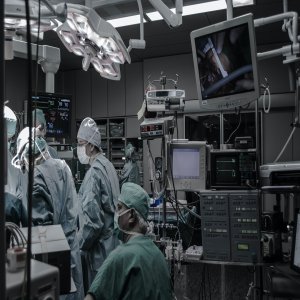
The Status of the New “Universal Provider”: IMSS-Bienestar
 By Miriam Bello | Senior Journalist and Industry Analyst -
Wed, 05/04/2022 - 16:20
By Miriam Bello | Senior Journalist and Industry Analyst -
Wed, 05/04/2022 - 16:20
Starting on May 3, each Tuesday, President Andrés Manuel López Obrador’s morning press conference will provide updates on the universalization of health through IMSS-Bienestar. The first update provided an analysis of the current status of IMSS-Bienestar.
The Ministry of Health developed a plan that will improve the health system considering “that half of Mexican men and women do not have social security and in that sense who do not have access to social security institutions,” said Zoe Robledo, Director General, IMSS.
The first phase of this plan, explained Robledo, is for all states to join so their infrastructure can be used by IMSS-Bienestar. The 15 participating states are undergoing a “radiography” of their health services to know the areas of opportunity of each state. This radiography will involve the evaluation of 331 hospitals and 4,665 first level units.
The areas of opportunity identified include macro-level needs, including lack of equipment in units, clinics and hospitals. The equipment missing includes “from diagnostic kits, devices, and some of the most basic tools that a general practitioner must have such as the steam sterilizers, stethoscopes, fetal heartbeat phono detectors and portable sphygmomanometers to measure pressure, among others,” said Robledo.
The institute determined that the 15 states need about 55,200 pieces of equipment in first level care units and 51,705 in second level care units. The latter need sonographers, ophthalmology units, dental service chairs, anesthesia units, sterilizers too, heat cots for newborns, surgical lamps, X-rays and clinical beds, among others.
IMSS-Bienestar also identified 1,607 infrastructure improvements pending. As its plan aims to provide care to more people, the majority of the investment will be used to improve operating rooms and increase the number of beds, medical offices and laboratories. “In that sense, we also plan to take other actions that make health centers more dignified, improving bathrooms, for example, for workers and the public,” said Robledo. In the 15 states, the goal is to have a system with 347 hospitals and 7,033 first-level units.
The major challenge identified during this process was the public sector’s lack of medical professionals. The sector needs 33,020 more health workers, including general doctors, specialists, nurses, stretcher bearers, ambulance drivers and kitchen and maintenance workers, among others.
















